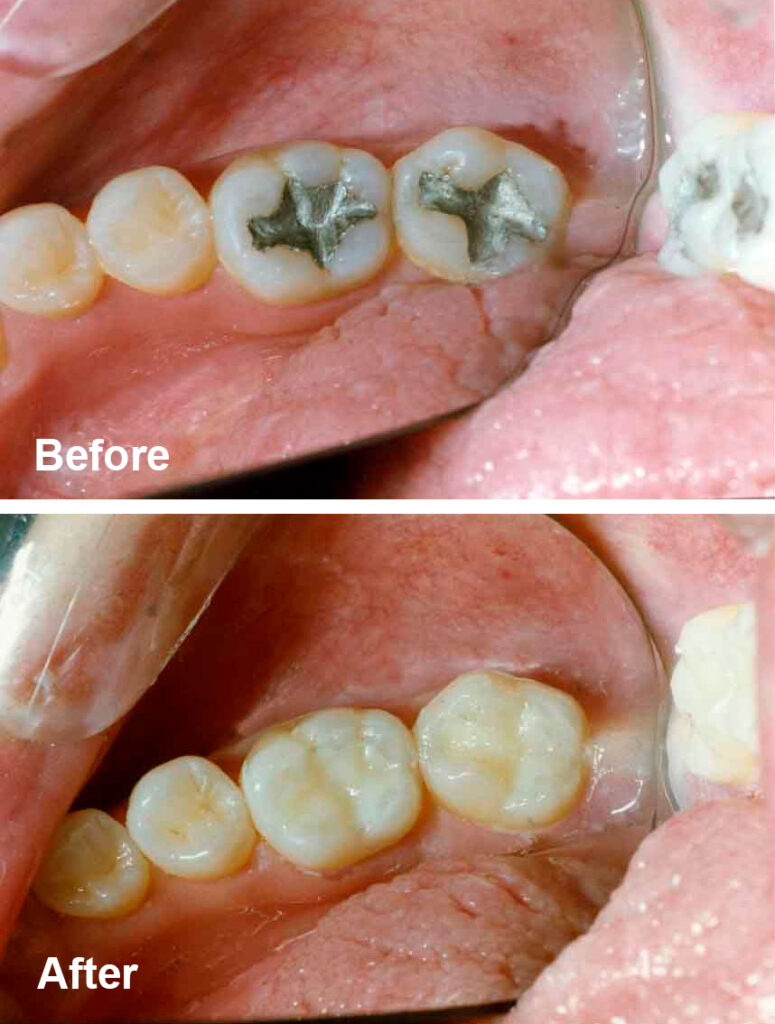The Strong, Virtually Invisible Way to Repair a Tooth
A dental filling (also called a dental restoration) may last many years before it needs to be replaced.
However, there are a number of reasons that fillings may need to be replaced. Constant stress from chewing, grinding and clenching teeth may eventually cause a filling to chip, crack, wear down, or fall out. A filling may also need to be replaced if the surrounding tooth structure becomes decayed.
Fillings that are worn or have pulled away from the teeth leave gaps at the filling edges, which provide an entry point for decay-causing bacteria. Bacteria are present in a thin film called plaque that forms on teeth and gums. If the seal between the tooth and the filling breaks down, food particles and bacteria can work their way between the worn filling and the tooth and cannot easily be removed with a toothbrush or other means.
Decay may develop along the edge of the filling or underneath it. Decay that is left untreated can infect the dental pulp, which often results in the need for root canal treatment. Untreated decay can even lead to loss of the tooth.
Regular dental examinations are important because problems with existing fillings generally can be detected in the early stage. Although you may not be able to tell that your filling is worn, your dentist can identify weaknesses in your dental restorations during a regular check-up.
During the exam, the dentist determines if the existing fillings are intact or if any have cracked or become worn. An instrument called an explorer can be used gently to detect any worn spots around the filling’s edge. Dental x-rays may be taken to find decay under a filling or between the teeth, neither of which can be seen simply by looking at the tooth.

Worn fillings should be replaced before decay begins. Don’t wait until the tooth hurts or a crack appears in the filling or the tooth. Cracks or infection may make treatment more complicated and expensive.
Restoring worn fillings
Advances in modern dental materials and techniques offer new ways to create more natural-looking smiles. Researchers have been working for decades to develop materials, such as ceramic and plastic compounds, that look like natural teeth. There are several types of tooth-colored materials that can be used to repair damaged or decayed teeth.
Many factors affect the performance, durability, longevity and expense of dental fi¬llings. These factors include:
- the materials in the filling
- size of the filling
- where and how the filling is placed
- patient’s level of oral health and hygiene
- patient’s overall health
- the chewing force that the tooth must bear
- the length and number of visits needed to prepare and adjust the restored tooth
There are several different types of fillings (amalgam and composite are two of the most common), but the ultimate decision about what to use is best determined by the patient in consultation with the dentist.
Before your treatment begins, discuss the options. In some cases, extensive tooth decay around an existing ¬filling may leave little tooth structure once the decay is removed. In that case, a crown may be recommended to completely cover and protect the remaining tooth. Be sure to:
- Keep your teeth and gums in good health with regular dental visits and professional cleanings.
- Brush twice a day with fluoride toothpaste, and clean between teeth once a day with floss or another interdental cleaner to remove decay-causing bacterial plaque that toothbrush bristles can’t always reach.
- Look for oral hygiene products that display the American Dental Association’s Seal of Acceptance, a symbol of safety and effectiveness.
